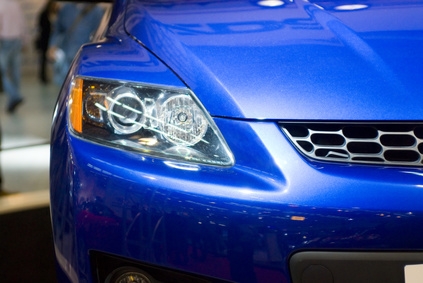
Buying a new car is an exhilarating experience -- the ownership of a brand new ride comes with freedom and possibility. Before you take your wheels out for a serious spin, though, you need to consider a few tips and guidelines. A new car needs to be broken in a bit before it sees any major action, so brush up on the basics and take it easy -- you and your car should enjoy a long, rewarding relationship, but you need to get off on the right foot.
Before you start driving, familiarize yourself with the car's bells and whistles -- you don't want to be caught in a rainstorm only to realize you can't figure out the windshield wipers. Read the owner's manual before you locate and test out the various gadgets and utilities the car offers, including the wipers, headlights, brights, cruise control, emergency brakes, adjustable mirrors and adjustable steering wheel positions. Before you take to the open road, you should be confident in your ability to control the vehicle's different tools, including the fun ones, like the CD player.
A new car, like a new baseball glove, needs to be broken in. The break-in period, usually the first 600 to 1,200 miles, gives your car the opportunity to settle in. Since it's new, the various parts -- including the piston rings -- haven't yet had the opportunity to find their groove. Characterized by easy driving, the break-in period gives these parts a chance to fall into place while sorting out any mechanical imperfections. The two rules of the break-in period are maintaining low RPMs and low speed. Try not to exceed 4,500 RPMs, and don't drive at excessive speeds if you don't have to -- vary your speed on highway trips instead of using the cruise control. Taking it easy on the engine now helps ensure a long life, so be patient.
You want your new car to always stay as nice as it is when you first buy it, so take the proper precautionary measures early in its life. Change the oil after the first 20 miles or so. This removes many of the imperfections and debris that are shaken loose from a young engine. After that, you should change the oil again near the end of the break-in period -- about 1,000 miles or so.
Avoid using protectants on the vinyl interiors, but do use a fabric protectant on your upholstery to fend off dirt and allergens. Give the outside of the car the same protection with a coat of wax to shield it from water, bugs and other debris.